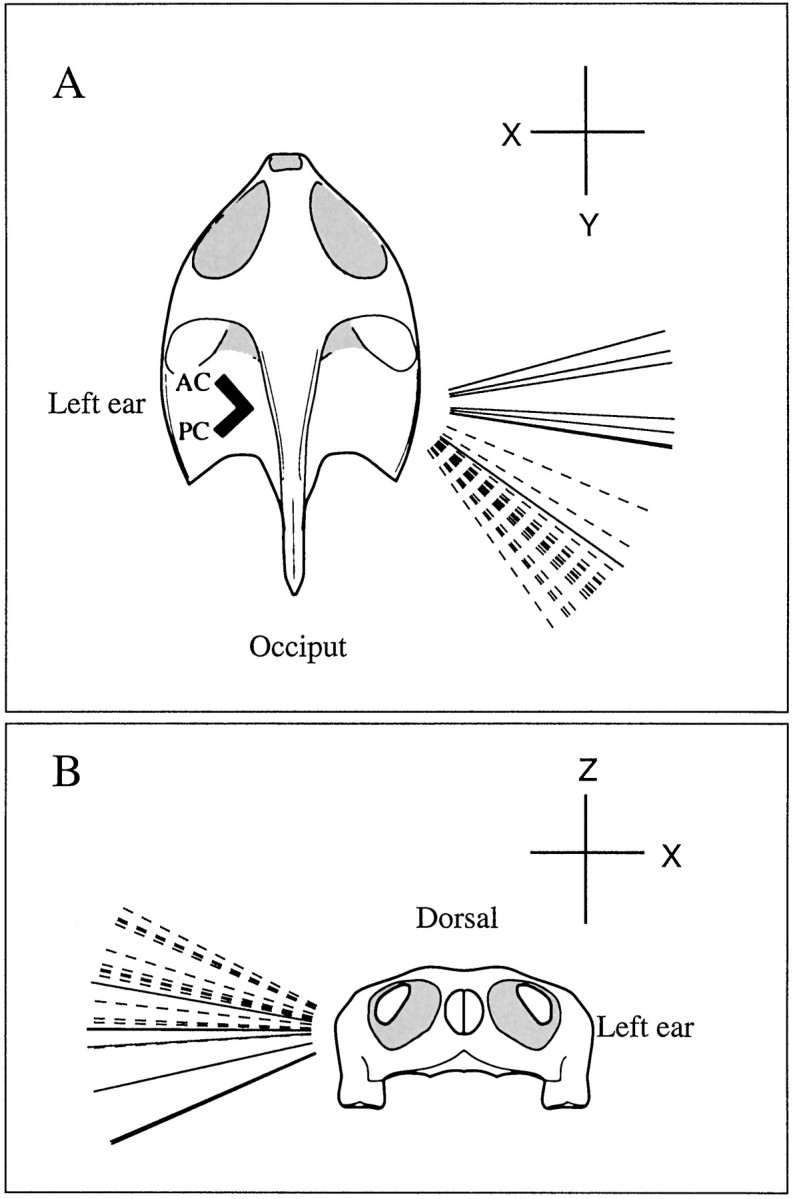Fig. 9.

Response vectors for eight PN (solid lines) and 25 PC units (dashed lines) from left ear. Each vector indicates a head-fixed rotation axis. Rotations in the plane perpendicular to the axis give maximal responses for the particular unit. Excitatory directions obtained from the right-hand rule with all vectors pointing away from head. Thick lines inside head (top), Silhouette of the two vertical canals. A, Orientation of vectors in the horizontal plane indicate relative sensitivities to rotations around pitch (X) and roll (Y) axes. PC units respond to rotations in the plane of the posterior canal and are almost equally excited by ipsilateral rolls and upward pitches. PN units respond to rotations in the pitch plane and are excited by upward pitches. B,Orientation of vectors indicate relative sensitivities to rotations around pitch (X) and yaw (Z) axes. Both PC and PN units are much more sensitive to pitches. Although the yaw sensitivity is small for both groups, PC units may be excited by ipsilateral and PN units by contralateral yaw rotations.
